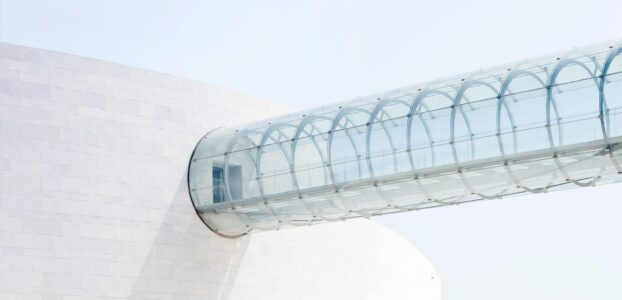What are they and what do they aim to do?
Policymakers use different methods to help encourage the generation and diffusion of new ideas, from research grants and tax incentives to public procurement. One important subset of these policies involves encouraging the co-location of researchers, entrepreneurs and/or established firms, so that they can share access to expensive equipment, forge links, or simply observe – and learn from – each other. Collaboration is becoming increasingly important in academic research, and facilitating collaborations may be an important effect of these programmes.
We have already published toolkits on incubators and accelerators, which are essentially ‘co-location’ policies aimed at entrepreneurs and startups.
This toolkit looks at interventions that encourage the co-location of researchers – aiming either to increase research output, improve commercialisation of ideas, or both. This family of policies includes supporting science parks, provision of key scientific infrastructure, building-level co-location, and encouraging temporary co-location (e.g. attending conferences and the networking that goes along with this). Studies typically look for impacts of these interventions on a range of outcomes, including collaborations, academic publications, patents, etc.
We focus here on evaluations of policies that specifically encourage co-location with the objective of increasing the quantity and/or quality of scientific output. This is distinct from a much larger set of academic studies that either describe researcher location patterns or compare outcomes between more and less densely concentrated groups. In what follows we point to a few example studies from this literature. Compared with this broader literature, the eight studies we focus on provide stronger evidence of the causal impact of specific ‘interventions’. We think this evidence is more practically relevant for policymakers in designing specific interventions.
Things to consider
- Can co-location raise the quality of research? Two studies suggest that inducing researcher proximity can improve the quality of research output. Both studies suggest that increased collaboration is one of the main channels through which this happens.
- What mix of activities should be encouraged? Five studies suggest that spillovers may exist between researchers in different academic fields or commercial sectors, but that the greatest positive effects of co-location occur for similar activities.
- What counts as co-location? The (limited) available evidence suggests that science park co-location impacts positively on firm-level patenting of research, but that spillover effects may die away rapidly with distance. This is consistent with our toolkits on incubator and accelerator programmes, in which we report generally positive outcomes for firms co-located in the same building or room.
- What about ‘temporary co-location’? Two studies suggest that temporary co-location (such as conferences and workshops) can also be effective in inducing collaboration and thus innovation. These studies suggest that careful conference design, including structuring interactions between participants, may be important.
- Should policies be targeted at particular types of researcher? The limited evidence we have suggests researcher type can matter, although more research is required here, especially as existing evidence refers only to temporary co-location.
- Should policy try to prevent the break-up clusters of researchers? One study finds that previously collaborating labs that are separated continue to collaborate in the future, although the quality of research suffers with separations.
How effective are they?
We found seven OECD evaluations that met our quality standards, three of which are from the UK.
Co-location within university campuses or buildings can have a positive effect – both on the probability of research collaboration and on subsequent research quality, according to two studies (1, 2). Study 2 looks at research office layout and finds that ‘walkability’ between researchers makes them more likely to collaborate. A more robust study (1) finds that researchers in laboratories that became randomly collocated were more likely to collaborate, the labs were more likely to research similar topics and cite more of the same research. Separation of previously collaborating labs did not lower the future probability of collaboration, but did lower the quality of research and resulted in labs researching divergent topics and citing different research. This suggests that distance increases search costs that partly determine research partnerships, but that collaborations are persistent.
Spillovers may exist between researchers in different academic fields or commercial sectors, but the greatest positive effects of co-location occur for researchers and firms undertaking similar activities. The evidence that supports this finding is quite diverse and more research is required. Two studies (3, 7), on science parks, find positive effects on patenting both within and across industries for firms in the park. Another study (5) on researcher co-location and activity around the UK’s Diamond Light Source Synchrotron, finds the strongest positive effects on research output that directly uses Diamond, although weaker effects are also found for related research. Two studies (4, 6) that look at temporary re-locations find bigger collaboration effects on researcher pairs in similar fields.
Co-location in science parks is associated with higher firm-level patenting but spillover effects may die away rapidly with distance, according to two studies (3, 7). Spillovers are found both within sectors and across different industries. One of these studies (3) suggests that positive spillovers within science parks operate over very small scales, disappearing for firms that are located more than 240 metres from one another inside a science park.
Attending the same conferences has a significant impact on the likelihood of future collaboration – especially if in a similar field, according to two studies (4, 6). The ‘temporary co-location’ effect is bigger where researchers are junior (rather than senior), at least one female (compared to both male) and for non-presenters (as opposed to presenters). The stronger of the two studies (an RCT) suggests that having previously collaborated increases the ‘event effect’ – but the other study says the opposite. We have no clear evidence whether prior collaborations are more or less likely to lead to future collaborations. However, studies on research lab breakup suggest that prior collaboration patterns matter a lot.
Co-location around new major science facilities leads to an increase in scientific output, according to one UK study (5). This study finds that increased scientific output in a 25km zone around the new Diamond Light Source Synchrotron in the UK was mainly driven by an increase in the number of researchers around the facility, rather than increased productivity of individual researchers.
Is co-location cost effective?
None of the studies provides cost-effectiveness information.
Co-location around new major science facilities leads to an increase in scientific output.





